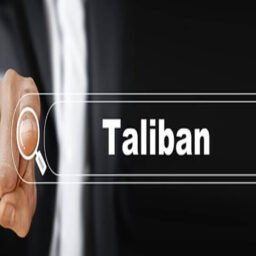INTRODUCTION
On 15th August 2021, the Taliban seized the capital city of Kabul and overthrew the Afghan Government. With the takeover came promises of better governance: Women would be given rights according to Sharia law, religious minorities would have rights as well as the freedom to conduct their ceremonies[1]. These “promises” were treated with scepticism and distrust. Millions fled the country, women with diplomas either hid or burnt them, shopkeepers of Kabul erased photos of women in wedding dresses, and the women’s national football team was advised to burn their jerseys.[2]
The Taliban forced many women (who were very often the sole breadwinners) to stay at home as a temporary measure for “security reasons”. This very explanation was given during the years 1996-2001. Another rule from the dark period that was bought back was that every woman must be accompanied by a male guardian, or mahram, in any public place[3].
It is not just the women who are being targeted, men and children suffer too. The Taliban killed Nine Hazara men between the 4th and 6th of July. Hazaras are Shia Muslims who were prosecuted previously by the Taliban yet managed to make major gains in their educational and social fields in recent years during the NATO occupation. The Taliban was also responsible for the killing of an Afghan journalist working for the German broadcaster Deutsche Welle. Apart from this, there have been various reports of demonstrators being killed in various cities, as well as reports of intimidation of those trying to flee the country[4].
Children continue to be recruited in the fight and face multiple abuses-including sexual abuses. Afghanistan, as per a United Nations Assistance Mission in Afghanistan (UNAMA) report, is one of the most dangerous countries in the world for children, with both pro and anti-nation state forces accountable for an excess of 1,000 child casualties each[5]. Given the way things are, many rightly fear a return to the Taliban’s harsh rule of the 1990s, when they confined women to stay at home, prohibited television, music, and movies, cut off the hands of suspected robbers, and held executions before the public.
WHAT IS INTERNATIONAL HUMANITARIAN LAW?
The International Committee of the Red Cross (ICRC)[6] defines international humanitarian law as: “a set of rules which seek, for humanitarian reasons, to limit the effects of armed conflict. It protects persons who are not or are no longer participating in the hostilities and restricts the means and methods of warfare. International humanitarian law is also commonly known as the law of war or the law of armed conflict.”
A huge chunk of the international humanitarian law can be found in the Geneva Conventions of 1949. Almost every nation has agreed to be bound by them. The Additional Protocols of 1977[7] further supplement the Conventions, and the treaty also applies to non-international armed conflicts taking place “in the territory of a High Contracting Party between its armed forces and dissident armed forces or other organized armed groups which, under responsible command, exercise such control over a part of its territory as to enable them to carry out sustained and concerted military operations and to implement this Protocol”.
International humanitarian law comes into force once a conflict has begun, and then is applied equally to all parties irrespective of who started the fight. According to an International Committee of the Red Cross’s advisory, “the law protects those who do not take part in the conflict, for example, civilians and medical and religious military personnel. It forbids the killing or wounding of an enemy who has surrendered or is unable to fight; the sick and wounded must be taken care of by the party under whose control they find themselves. It also restricts the means of warfare (weapons) as well as the methods of warfare (military tactics)”. It must be noted, however, that while human rights law applies only in peacetime, and may be suspended during an armed conflict, humanitarian law is applicable only once the conflict begins.
LEGALITY OF INTERNATIONAL HUMAN RIGHTS LAW IN AFGHANISTAN
All parties to a conflict must adhere to Article 3 common to the Geneva Convention[8] that makes provisions for the minimum standard to be appreciated and calls for humane treatment without any adverse discrimination of all people not or no longer taking an active part in hostilities. Article 3 further prohibits “murder, mutilation, torture, cruel, inhuman, and degrading treatment, taking hostages, and unfair trials”.
The criterion provided by the Rule of Law in Armed Conflicts (RULAC) [9] that need to be considered to determine whether the situation of armed violence is a non-international conflict are:
- “The level of violence must reach a certain degree of intensity that goes beyond internal disturbances and tensions.
- In every non-international armed conflict, at least one side to the conflict must be a non-state armed group that must exhibit a certain level of organization to qualify as a party to the non-international armed conflict. Government forces are often assumed to satisfy the criteria of the organization.”
Since the Taliban has a well-defined structure and control a major portion of the Afghanistan area, the Additional Protocol II is applicable in the fight between them and the Afghanistan forces. Afghanistan is also a party to the Rome statute since the year 2003, thus allowing the International Criminal Court (ICC) to exercise its authority and punish persons responsible for violating the International Criminal Law in Afghanistan.
THE WAY FORWARD
On 30th August 2021, The United Nations Committee on the Elimination of Discrimination against Women (CEDAW) and the United Nations Committee on the Rights of the Child (CRC) held a meeting and called on the Taliban to guarantee the rights of Afghan women and girls and to respect and fulfil the human rights provided in the Convention on the Elimination of All Forms of Discrimination against Women as well as the Convention on the Rights of the Child.[10] Recalling the restrictive restrictions on women’s and girl’s rights to freedom of movement, expression, education, and work, both the committees urged “those in power and exercising effective control in Afghanistan to comply with the basic tenets of international human rights and humanitarian law, including their due diligence obligation to prevent and protect women and girls from gender-based violence and discrimination”.[11]
The committees further urged the Taliban to uphold their commitments and fulfil their plan to form an inclusive government. Regarding the statement by the Taliban that women would be allowed to play an active role in the society, but only under the structure of Islam, the committees stated that as per the international humanitarian law, which is binding on those exercising control over Afghanistan, violations of women’s and girl’s rights and freedoms cannot be justified by religious norms and traditions. The committees[12] also called on the Taliban and various other State organs to “respect and ensure to all persons under their jurisdiction or effective control, specifically women and girls, the human rights provided in the Conventions and in all other human rights treaties to which Afghanistan is a party.”
Author(s) Name: Shradha Ahuja (Himachal Pradesh National Law University, Shimla)
References:
[1] Richard Engel and Alexander Smith, ‘Taliban reaches out to the West, promises rights for3 Afghan women’ (NBC News, 26 Aug 2021) <https://www.nbcnews.com/news/world/taliban-say-women-will-be-allowed-rights-despite-fears-no-n1277677> accessed 5 Sep 2021
[2] Emma Graham-Harrison and Luke Harding, ‘The fall of Kabul: a 20-year mission collapses in a single day’ (The Guardian, 15 Aug 2021) <https://www.theguardian.com/world/2021/aug/15/the-fall-of-kabul-a-20-year-mission-collapses-in-a-single-day> accessed % Sep 2021
[3] Emma Graham-Harrison and Akhtar Mohammad Makoii, ‘Evidence contradicts Taliban’s claims to respect women’s rights’ (The Guardian, 3 Sep 2021) https://www.theguardian.com/world/2021/sep/03/afghanistan-women-defiant-amid-taliban-crackdown accessed 5 Sep 2021
[4] Peter Beaumont and Hannah Ellis-Petersen, ‘ Afghanistan reports of torture and killing contradict Taliban’s promise’ (The Guardian, 21 Aug 2021) https://www.theguardian.com/world/2021/aug/20/afghanistan-reports-of-torture-and-killing-contradict-taliban-promises accessed 5 Sep 2021
[5] Human rights service Afghanistan Annual Report on Protection of Civilians in Armed Conflict: 2019 pg 21, para 3
[6] International Committee of the Red Cross, Advisory service on International Humanitarian law pg 1
[7] International Committee of the Red Cross, Advisory service on International Humanitarian law pg 1
[8] ‘Non-international armed conflicts in Afghanistan’ (RULAC-Geneva Academy, 3 Sep 2021) <https://ihl-databases.icrc.org/applic/ihl/ihl.nsf/Article.xsp?action=openDocument&documentId=BAA341028EBFF1E8C12563CD00519E66> accessed 6 Sep 2021
[9] Id
[10] ‘Afghanistan: UN committees to urge Taliban to honour their promises to protect women and girls’ (Office of the High Commissioner-UNHRC, 30 Aug 2021) <https://www.ohchr.org/EN/NewsEvents/Pages/DisplayNews.aspx?NewsID=27414&LangID=E> accessed 5 Sep 2021
[11] Id
[12] Id








